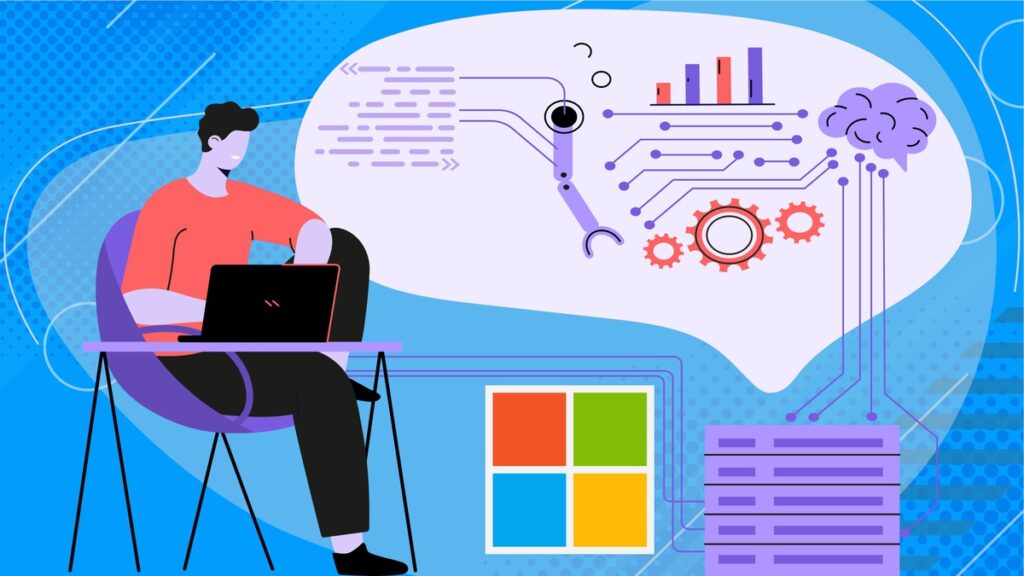In the WFH Jobs with No Degree Required article was introduced a function called crowdsourcing data evaluator, in which it is possible to work completely remotely and earn extra income to achieve your main goals, which could be a trip, an exchange program, or even covering current expenses. In today’s article, we will explain in a practical and concise way how you can become a crowdworker and assist one of the world’s largest technology companies, Microsoft.
Microsoft and Crowdsourcing
Microsoft utilizes crowdsourcing as a dynamic tool for refining its algorithms, harnessing the collective intelligence of diverse individuals to enhance various aspects of its products and services.
For instance, imagine Microsoft wants to teach their computers to understand pictures of animals. They ask people from different places to show them pictures and say what animals are in them. It helps the algorithm learn and get better at recognizing animals in pictures.
Another way they use crowdsourcing is with language. Let’s say Microsoft wants their computers to understand and talk like people do. So, they ask people to suggest better ways a computer can understand what we say and give helpful answers. This makes their talking computers much more useful.
Roles and Responsibilities
Microsoft Crowdworkers undertake diverse roles aligned with the company’s needs. They may contribute by annotating images, transcribing audio, evaluating search engine results, testing software applications, providing feedback on user interfaces, and more. These tasks play a crucial role in training machine learning models, improving the accuracy of algorithms, and fine-tuning products.

Earnings and Compensation
The earnings of Microsoft Crowdworkers can vary widely based on factors such as the complexity of tasks, time required, and the project’s scope. On average, Crowdworkers can earn anywhere from a few cents to several dollars per task completed, which are commonly paid through PayPal, Payoneer or direct transfer to a bank account. Simple tasks, like image categorization, may offer lower compensation, while more intricate tasks that demand specific skills, like translating text, may provide higher payouts.

How to Become a Microsoft Crowdworker?
Becoming a Crowdworker for Microsoft involves several steps, and the process can vary based on the specific platforms or projects the company utilizes. So here it will be focused on Microtasks on the Universal Human Relevance System (UHRS), which Microsoft relies on Clickworker, OneForma and many more companies, to connect them with crowdworkers. That being said, the first and most important step is to choose from which company starts the process.
Ps.: There are some other crowdsourcing platforms we can talk about in future articles.
Universal Human Relevance System (UHRS)

The UHRS is an integral component of Microsoft’s crowdworking ecosystem, designed to facilitate the evaluation and enhancement of machine learning algorithms through human judgments. UHRS acts as a bridge between machine intelligence and human insight, contributing to the refinement of algorithms, particularly in the domains of natural language processing, computer vision, and artificial intelligence. Its operation involves 5 main key aspects:
1. Task Integration: Companies or organizations, including Microsoft, create tasks or projects that require human input to validate, assess, or annotate data. These tasks could involve tasks like evaluating search engine results, categorizing images, transcribing audio, and more.
2. Task Distribution: UHRS interfaces with various crowdsourcing platforms to distribute these tasks to a distributed workforce, often referred to as crowdworkers. These platforms provide a pool of remote workers who can access and complete the tasks.
3. Task Completion: Crowdworkers access the UHRS platform and select tasks based on their availability and skills. They follow provided guidelines and criteria to complete the tasks accurately and effectively.
4. Quality Control: To ensure accuracy and reliability, UHRS employs various mechanisms. For instance, some tasks might be used as “gold standards” to assess a worker’s performance. Consistency and quality are vital in maintaining the integrity of the data collected through human judgments.
5. Aggregation of Results: The data collected from crowdworkers is aggregated and analyzed. These human judgments serve as reference points for machine learning algorithms, aiding in the training and improvement of AI models.
Is it worth it to Become a Crowdworker on the UHRS?
Deciding whether to become a crowdworker on the UHRS depends on your goals, skills, and preferences. Here’s an honest assessment of the pros and cons to help you make an informed decision:
Pros
- Flexibility: Crowdworking on UHRS offers flexible working hours, allowing you to choose tasks that fit your schedule.
- Remote Work: You can work from the comfort of your home or any location with an internet connection, making it a convenient option.
- Extra Income: UHRS can provide a supplementary source of income for those looking to earn extra money in their free time.
- Diverse Tasks: UHRS offers a variety of tasks, which can be interesting and provide exposure to different aspects of technology and data.
- Skill Building: Completing tasks can enhance your skills, such as data annotation, content assessment, and quality control.
- Low Entry Barrier: Most tasks do not require specialized skills or qualifications, making it accessible to a wide range of individuals.
- Microtasking: Many tasks are quick to complete, allowing you to earn money in small increments when you have spare time.

Cons
- Low Pay: The compensation for individual tasks can be low, especially for simpler tasks. It may not be a viable primary income source.
- Inconsistent Availability: The availability of tasks can vary, and there might be periods when tasks are limited or unavailable.
- Task Unpredictability: Some tasks might be ambiguous or challenging, leading to uncertainty about the time required to complete them accurately.
- Quality Control: Maintaining high accuracy is essential, as inconsistent performance might lead to limited task access or lower pay rates.
- Repetitive Nature: Certain tasks can be repetitive and monotonous, which may impact motivation over time.
- Platform Dependence: Crowdworkers rely on the platforms that connect with UHRS. Changes in platform policies or availability could affect task opportunities.
- Limited Earning Potential: While there are opportunities to earn extra income, the earning potential might not be substantial, especially for those seeking larger income streams.

Conclusion
Becoming a crowdworker on UHRS can be worthwhile for individuals looking to earn extra income, gain experience in data-related tasks, and contribute to the development of machine learning algorithms. However, it’s important to manage expectations, as the compensation might not be high, and tasks can be unpredictable in terms of availability and complexity. If you value flexibility, enjoy microtasking, and are interested in technology-related tasks, UHRS could offer a convenient way to earn some supplementary income. However, if you’re seeking stable or significant income, you might want to explore other opportunities alongside crowdworking and we can help you on that, click on the button below to apply right now on our selection process and in case you are selected, our recruitment team will lead, support and advise you on this journey!





